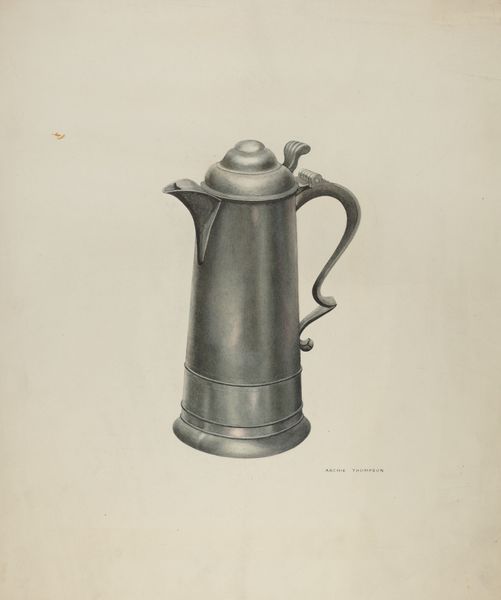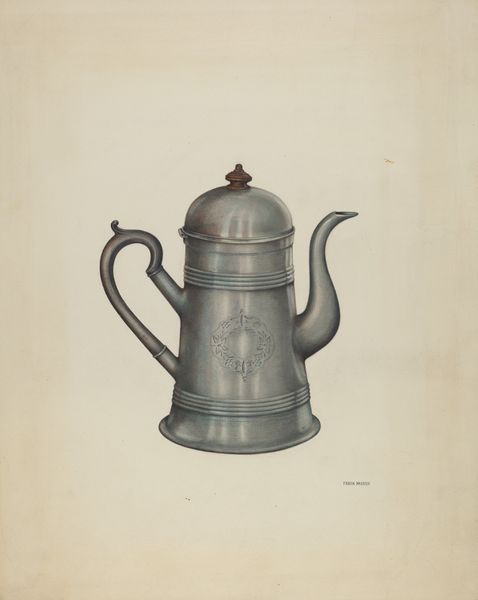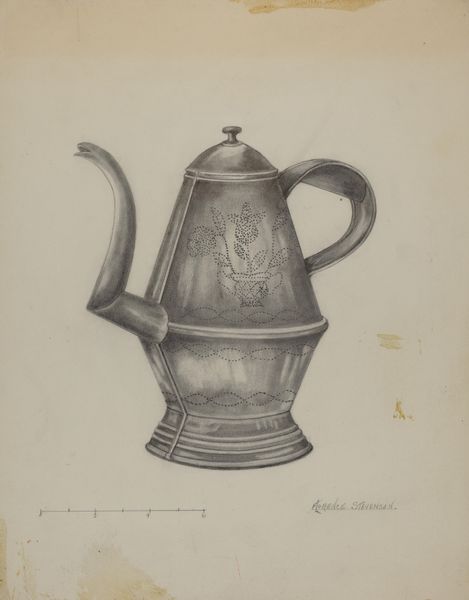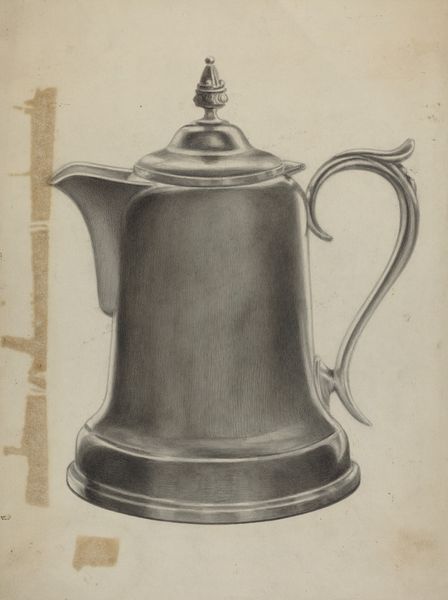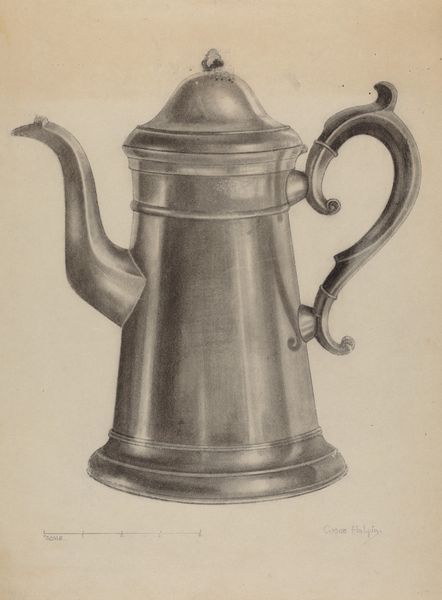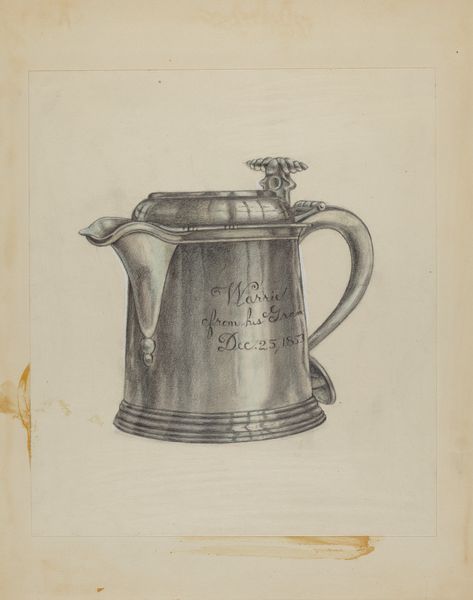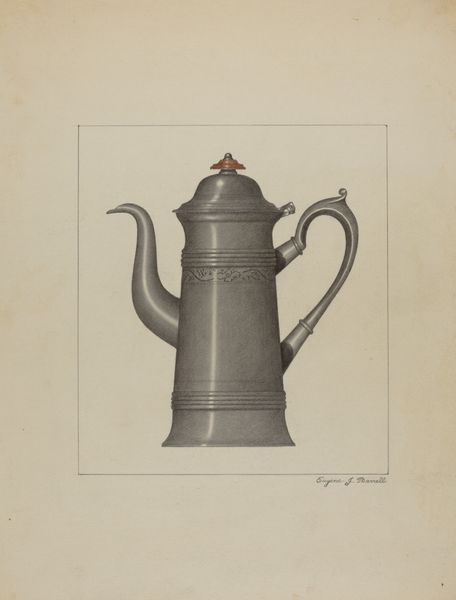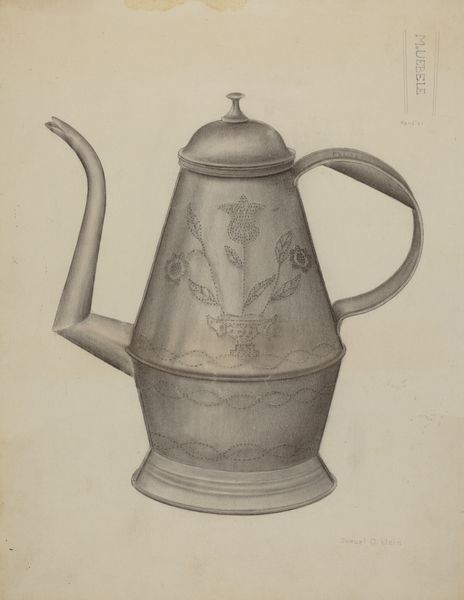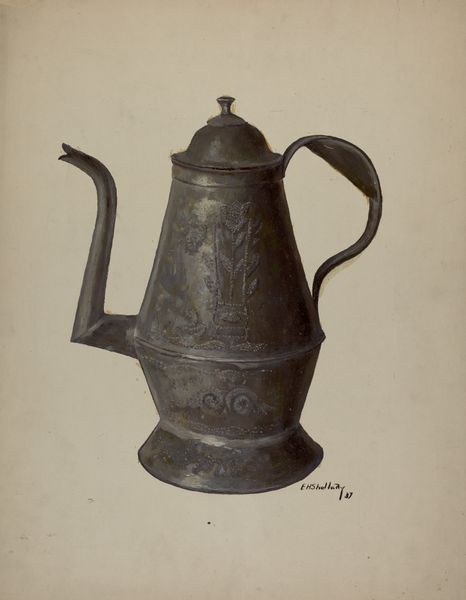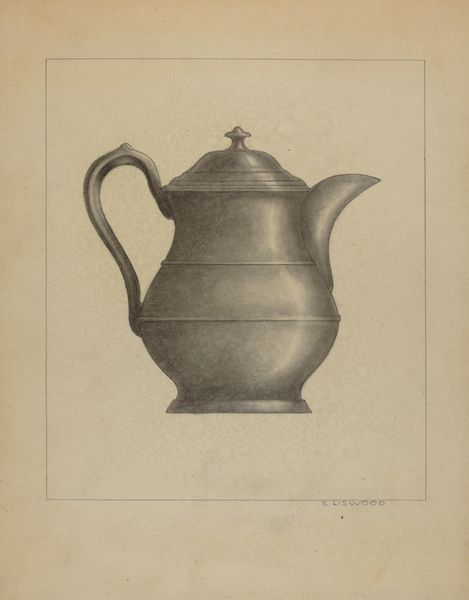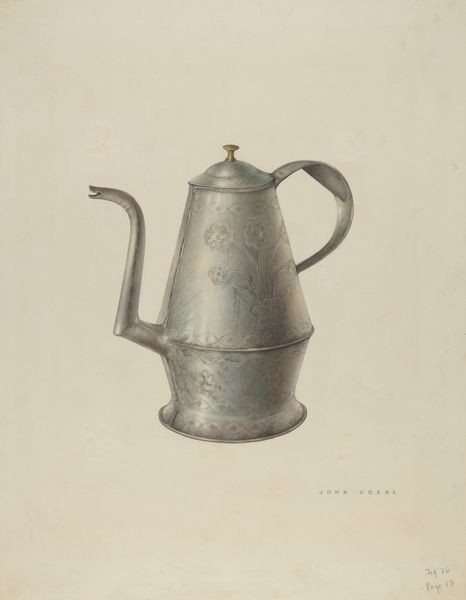
drawing, pencil
#
drawing
#
pencil
#
realism
Dimensions: overall: 36.7 x 29.3 cm (14 7/16 x 11 9/16 in.) Original IAD Object: 9" high; 4 3/4" in diameter
Copyright: National Gallery of Art: CC0 1.0
Curator: It presents such a stark, almost utilitarian object with such delicacy. Editor: Exactly! What we have here is Glenn Wilson's "Pewter Teapot," circa 1941, rendered meticulously in pencil on paper. Curator: Yes, the cool tones and subdued lighting create this mood of quiet contemplation. Its symmetry and balance are incredibly pleasing. Note how the handle mirrors the spout's elegant curve! Editor: Let’s think about why this subject—a commonplace pewter teapot—warrants such artistic attention. The '40s saw significant shifts in material culture, didn't they? Pewter was once ubiquitous, affordable, even a signifier of working-class aspiration, and maybe a pencil drawing made it more affordable to own a likeness. Curator: Fascinating, and if we look closer at the drawing's process, the artist captures not just the teapot's form but also its subtle texture. Editor: The rendering of the reflective surface suggests how reliant Wilson was on the interaction between the light and shadow. See the soft gradients? The strategic deployment of hatching and cross-hatching builds depth that convinces the eye. Curator: A reminder, too, perhaps, of functional design’s capacity to attain elegance. Is there, maybe, an assertion here about the nobility of humble objects? Editor: Undoubtedly, and that touches on how this medium is traditionally distinct from those we may think are higher. Think about what Wilson would want a viewer to consider here. What class considerations may affect your impression? Curator: Looking at the overall effect, there's a sort of stillness that goes beyond mere representation; Wilson captures, even elevates, a quiet moment of domestic life, transforming the mundane into something truly arresting. Editor: Indeed, its rigid adherence to realism emphasizes an understated poignancy when framed by this attention to technique and materiality. I hadn’t quite considered those aspects until now.
Comments
No comments
Be the first to comment and join the conversation on the ultimate creative platform.

